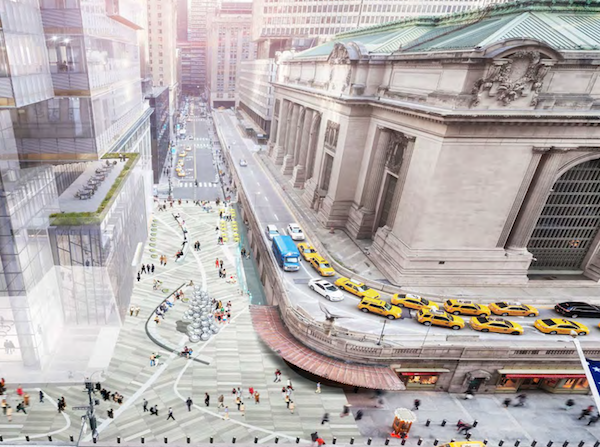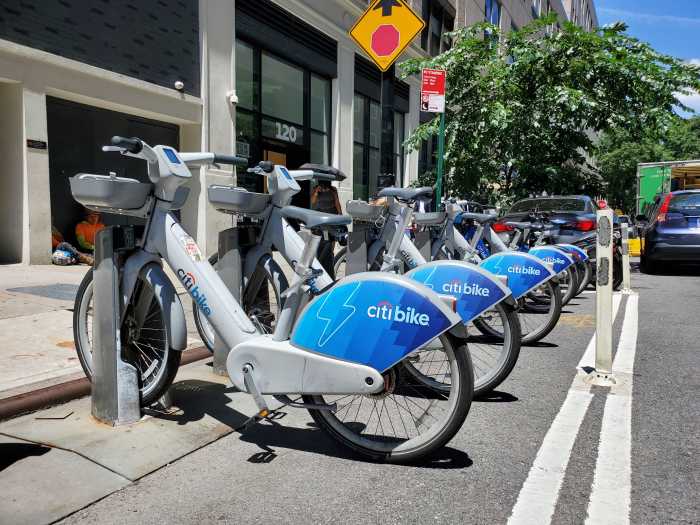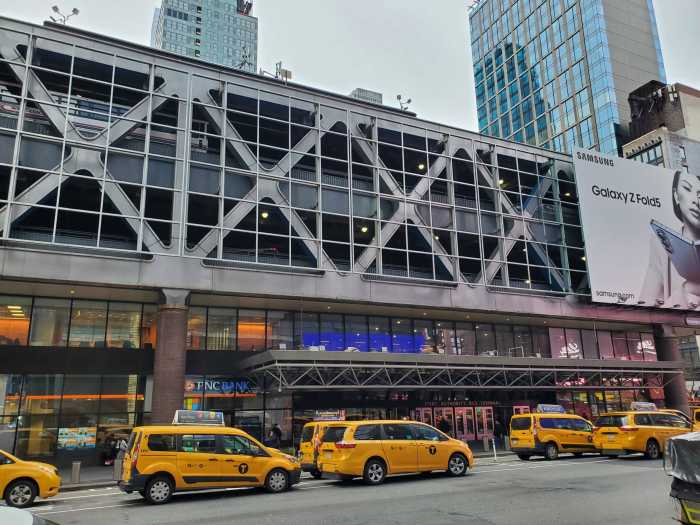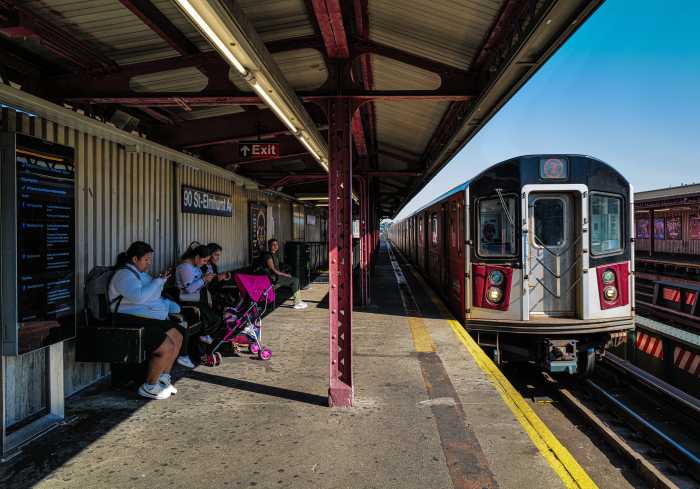
BY JACKSON CHEN | The city’s Department of Transportation and the Metropolitan Transportation Authority are teasing possible public realm improvements that could be in the offing as the result of the major Midtown East rezoning now underway.
At a Community Board 5 Land Use Committee meeting on November 2, both agencies presented a sampling of projects that would be on the menu for developers looking to win approval for greater building density than zoning would otherwise allow.
The Midtown East rezoning covers most of the blocks between East 39th and East 57th Streets, from Fifth Avenue to Third, with the district extending east to Second Avenue between 42nd and 43rd Streets. The rezoning is intended to attract modern office building construction, and developers are offered more floor-to-area ratios (FARs, which compare total floor space to the size of the land a building sits on) if they purchase air rights from landmarked buildings in the district or tackle public realm improvement projects as part of their project.
The agencies’ presentations to CB5 signaled their willingness to keep the community in the loop about their thinking.
The DOT is looking at more than 300,000 square feet of improvements as part of the rezoning, according to the agency’s director of public space, Emily Weidenhof. The majority of those improvements, she explained, would be small-scale and focused, such as curb extensions in the form of neckdowns or bus bulbs that would reduce the distances pedestrian face in crossing the street and improve the safety and efficiency of bus loading.
Weidenhof, however, also talked about bigger projects, such as redesigning Park Avenue from East 46th to East 57th Streets by cutting down one lane of traffic in each direction to provide a combination of left turn lanes and median extensions.
The DOT is also looking to repurpose underutilized streets as pedestrian plazas or shared streets. As an example, Weidenhof said there’s a plaza possibility at West 43rd Street between Lexington and Third Avenues due to the low vehicular usage and high foot traffic passing by during peak hours. For shared streets, where cars are allowed to travel around five miles per hour and pedestrians have priority, the DOT said there are opportunities at East 41st Street between Lexington and Fifth Avenues, East 44th Street between Lexington and Third Avenues, and Vanderbilt Avenue between East 43rd and East 47th Streets.
The MTA has identified six stations in need of improvements located within the proposed Midtown East rezoning area: the Lexington Avenue/ 53rd Street station that connects to the 51st Street station, Lexington Avenue/ 59th Street, Fifth Avenue/ 53rd Street, 47th-50th Streets/ Rockefeller Center, 42nd Street/ Bryant Park, and Grand Central/ 42nd Street.
As with the DOT, the majority of the MTA’s public realm improvement projects are straightforward efforts aimed at improving straphanger flow and reducing congestion throughout the six stations. The MTA’s senior director of strategic initiatives, Fredericka Cuenca. presented proposed changes to the connected Lexington Avenue/53rd Street and 51st Street stations that include creating wider escalators to eliminate long queues at transfer points and exits, removing a short, one-flight escalator, and creating additional street exits.
CB5 members responded positively to the suggested transit and traffic improvements that could be coming. Sam Meller, a CB5 Land Use Committee member, said the last meeting where the rezoning was taken up left him disappointed but that he was pleased with what he is now seeing from the DOT and the MTA.
“I remember coming away thinking it was just going to be resurfacing and making it prettier,” Meller said of the earlier presentation. “But what we saw today was something more significant philosophically above ground and towards making the subway system easier to navigate, which is an absolute necessity moving forward.”
Despite their enthusiasm, CB5 Land Use Committee members asked questions about the governing body that will manage the Public Realm Improvement Fund and so call the shots on which projects eventually make it onto the list for developers to select from. With no news yet on how much money will be available to the Public Realm Improvement Fund, what the costs of prospective projects are, and how its governing body will be run, Land Use Committee vice chair John Murray again stressed the importance of oversight and project prioritization.
“It’s about making sure there’s a strong set of guiding principles established for what the priorities are before the board exercises their jurisdictional power to decide what gets done,” he said.
Representing the Department of City Planning, Bob Tuttle said that the city would most likely not weigh in on decisions regarding the Public Realm Improvement Fund, instead leaving matters up to its governing body. Murray, however, voiced concern that special interests or those with direct ties to specific projects may influence how the governing body spends its funds.
Tuttle said the cost projections for specific projects are still being developed and will be discussed at a later CB5 Land Use Committee meeting.




































